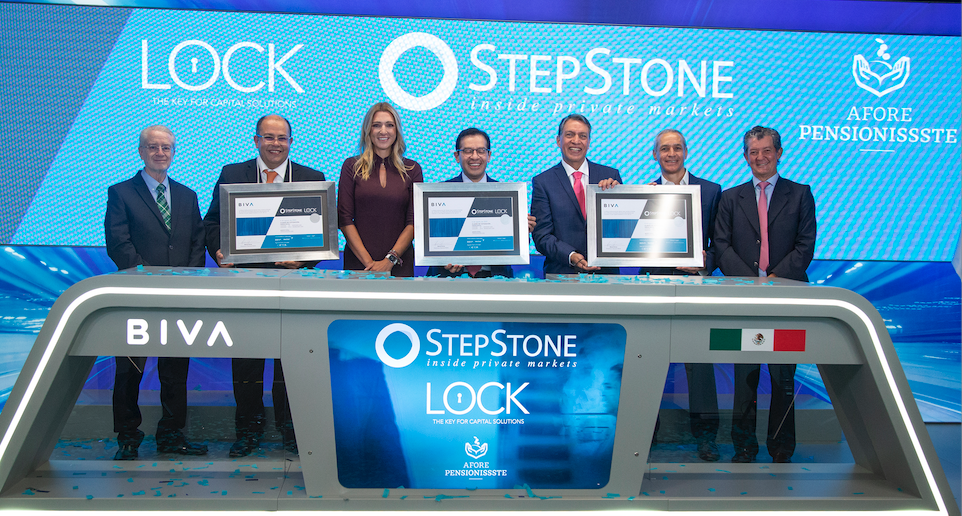Private markets have historically produced attractive returns relative to their public market counterparts. However, retail investors, and especially high net worth individuals (HNWIs), currently maintain a small exposure to this potential source of return compared with large institutional investors. StepStone Group, a global private markets investment company, launched Conversus, its private wealth platform in 2019 with the hope of converting the advantages enjoyed by large institutions into opportunities for small institutional investors and HNWIs.
Funds Society had the opportunity to chat with Shannon Bolton, a managing director at StepStone, and Neil Menard, president of distribution at Conversus, about the end-to-end solution that CPRIM offers to retail investors to access the same high-quality global investments in private markets as major institutions.
Specifically, Bolton and Menard presented CPRIM as a multi-strategy private markets fund that provides global and diversified access to a wide spectrum of asset classes—private equity, real assets (real estate and infrastructure) and private debt—in a single investment. CPRIM takes advantage of StepStone’s deep institutional relationships and investment experience in these markets. As of June 30, 2021, StepStone oversaw $465 billion of private markets allocations, including $90 billion of assets under management. Its clients include some of the world’s largest public and private defined benefit and defined contribution pension funds, sovereign wealth funds and insurance companies.
Minimum investment of $50,000, monthly Net Asset Value and potential for quarterly liquidity
“If you think about the conditions that worry HNWIs about conventional private-equity funds—10-year lockups, unpredictable capital calls, ‘black box’ investment strategies—investors don’t really know what they’re buying,” Neil explains at the beginning of the interview. “We [at StepStone] have been able to eliminate all of this with CPRIM. We have been able to offer significant diversification within the private markets in an investor-friendly structure.”
Created in October 2020, during the coronavirus pandemic, CPRIM stands out as an open-architecture investment strategy. The fund invests in deals and with managers that StepStone identifies as the best in private markets.
In addition to its open architecture investment strategy and the ability to access quarterly liquidity as core building blocks, Bolton points to three features that differentiate CPRIM from other semi-liquid private market investment vehicles: CPRIM only invests in private markets deals, and the fund does not invest in ETFs or publicly traded stocks so the true underlying exposure is only to the private markets. The fund also holds a low cash position, 5–10% target of the portfolio; and the fund structure is fee efficient. There is no performance fee, and the management fee is only 1.4%, which is quite low for a fund that invests in private markets and gives investors the ability to redeem quarterly.
“The fund allows access to private markets to investors who either do not have the standard minimum five million dollars of investment needed to access conventional private equity funds or to those investors who are not comfortable with the lack of liquidity in those markets,” she adds.
Symbiosis between StepStone and Conversus
CPRIM is managed consistently with other separately managed accounts held by StepStone, Menard explains. “The big concern among many investors is that the deals that go into retail funds are the ones that the big investment institutions did not want. Since we launched the fund last October, we have made approximately 56 investments [in CPRIM] as of August 1, 2021. Each one of these was conducted alongside one or more of StepStone’s institutional clients,” says Menard.
The profitable symbiosis between StepStone and CPRIM comes through the size of its team and the first-hand information they have thanks to extensive research and engagement with investment firms; in context, StepStone holds an average of 4,000 meetings annually with general partners. The information harvested feeds a proprietary database called SPI (StepStone Private Markets Intelligence), explains Bolton, which is a fundamental tool to track the activities of underlying GPs. “As of June 30, 2021, SPI contains information on more than 66,000 private companies, 38,000 funds and 14,000 general partners,” explains Bolton.
Highly diversified portfolio with monthly NAVs and potential for quarterly liquidity
The multi-strategy fund that characterizes CPRIM aims to build a portfolio “as diversified as possible,” says Bolton. In the long run, the strategic asset allocation aims to devote 40–60% to private equity, as well as 25–40% to real assets and, finally, a small portion to private debt. “The more diversified the fund, the more it will behave like a model where we can predict cash flow. That is what we want to do.”
How do you launch such a fund for retail investors? How do you manage to minimize the J-curve? “The obvious way is to invest in late-stage secondary portfolios so that you can put the money to work right away, or through direct co-investments. StepStone has a very robust pipeline in both secondary transactions and co-investments. Over time, we will start adding primary fund investments to the portfolio. This will happen when the portfolio starts to generate enough cash to meet capital calls without generating cash drag, which we don’t think will happen for three or four years,” says Menard.
The current composition of the portfolio shows an abundance of private equity investments, at more than 70% of the portfolio, and an allocation of around 20% to real estate and infrastructure. More than 80% of these investments were made through secondary transactions and about 20% through co-investments, according to the fund’s managers.
“We do not focus on a particular sector or industry, as there are always good opportunities in all sectors. We believe we can give investors a very diversified private markets portfolio that has the ability to provide liquidity to investors quarterly,” summarizes Bolton.
“CPRIM provides convenient, efficient and transparent access to private markets, through a semi-liquid structure, for small institutional investors and individuals,” Menard concludes.


